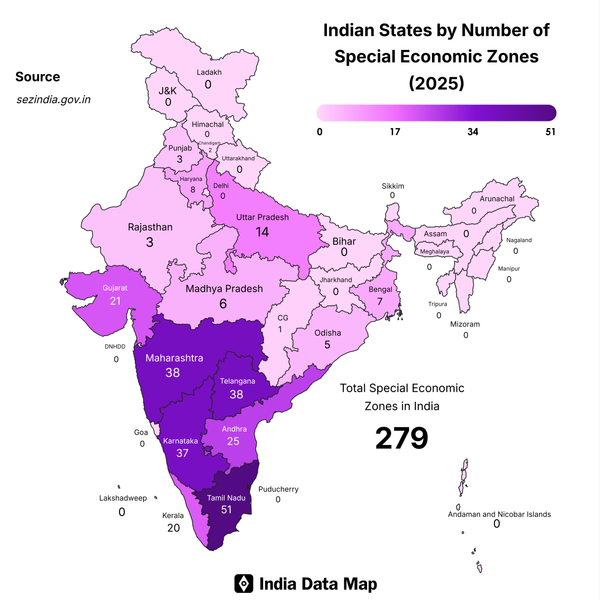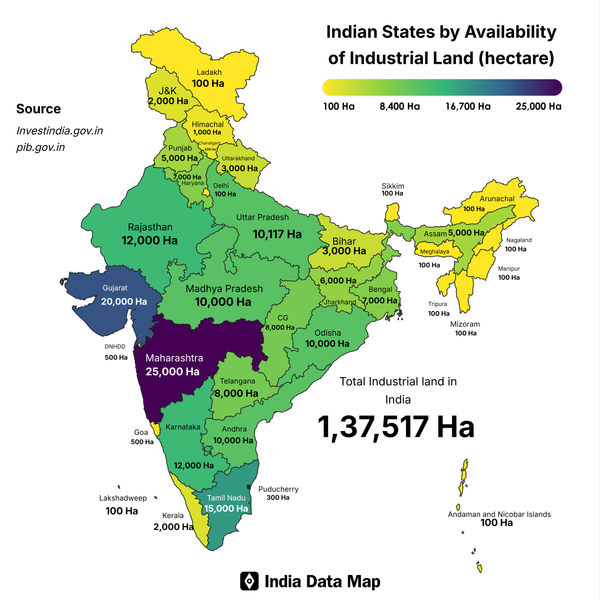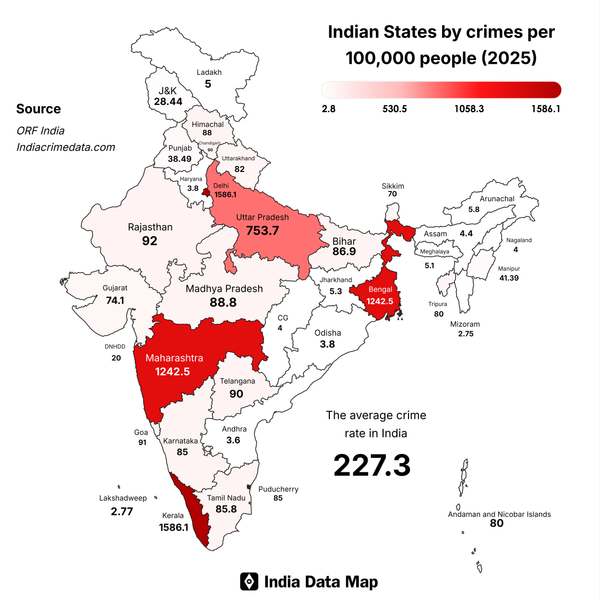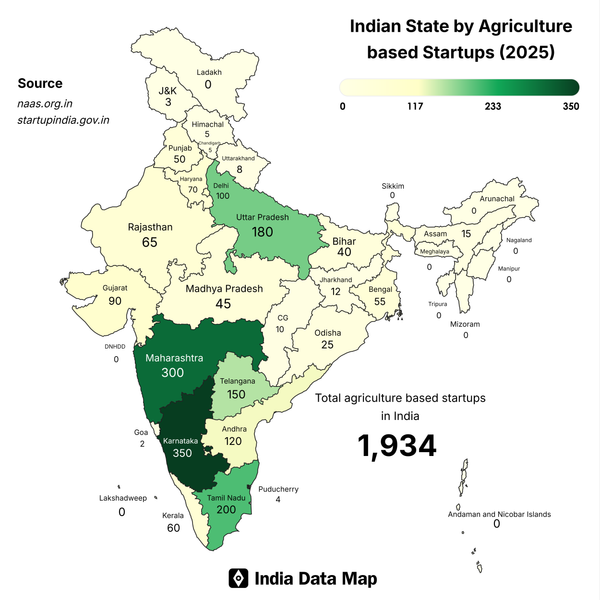Map: Indian States by Wind Energy Capacity (2025)
Discover India's 2025 wind energy leaders: Gujarat (13,817 MW) and Tamil Nadu (11,830 MW) dominate, while 26 states have zero capacity. Key insights!
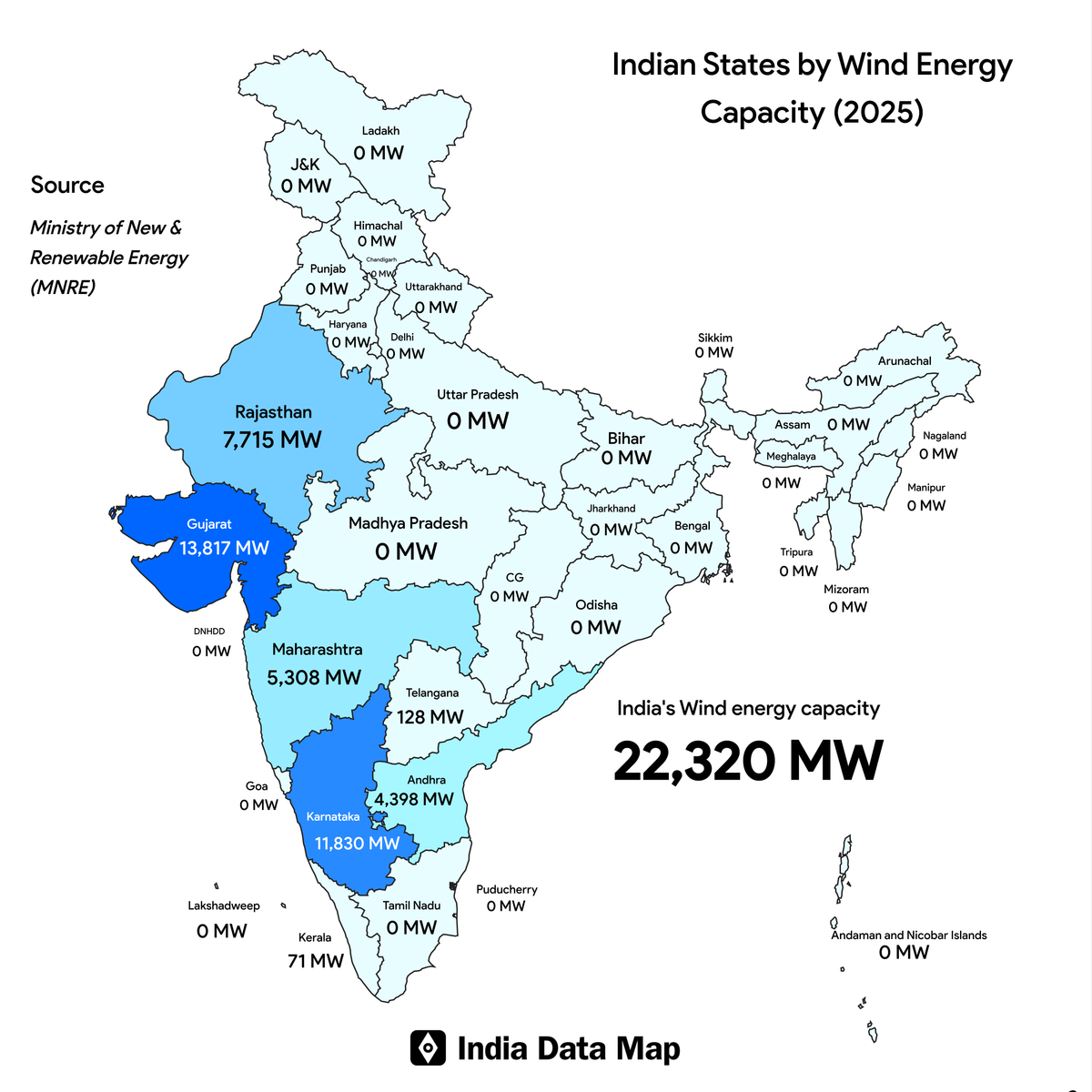
Wind energy serves as a fundamental element of India’s renewable energy strategy, with a substantial capacity concentrated in select states. According to the 2025 state-wise wind power capacity data, the following are the key facts and observations regarding India’s wind energy landscape.
| Rank | State/Union Territory | Wind Power Capacity (MW) |
|---|---|---|
| 1 | Gujarat | 13817 |
| 2 | Tamil Nadu | 11830 |
| 3 | Karnataka | 7715 |
| 4 | Rajasthan | 7715 |
| 5 | Maharashtra | 5308 |
| 6 | Andhra Pradesh | 4398 |
| 7 | Madhya Pradesh | 3195 |
| 8 | Telangana | 128 |
| 9 | Kerala | 71 |
| 10 | Andaman and Nicobar Islands | 0 |
| 11 | Arunachal Pradesh | 0 |
| 12 | Assam | 0 |
| 13 | Bihar | 0 |
| 14 | Chandigarh | 0 |
| 15 | Chhattisgarh | 0 |
| 16 | Dadra and Nagar Haveli and Daman and Diu | 0 |
| 17 | Delhi | 0 |
| 18 | Goa | 0 |
| 19 | Haryana | 0 |
| 20 | Himachal Pradesh | 0 |
| 21 | Jammu and Kashmir | 0 |
| 22 | Jharkhand | 0 |
| 23 | Ladakh | 0 |
| 24 | Lakshadweep | 0 |
| 25 | Manipur | 0 |
| 26 | Meghalaya | 0 |
| 27 | Mizoram | 0 |
| 28 | Nagaland | 0 |
| 29 | Odisha | 0 |
| 30 | Puducherry | 0 |
| 31 | Punjab | 0 |
| 32 | Sikkim | 0 |
| 33 | Tripura | 0 |
| 34 | Uttarakhand | 0 |
| 35 | West Bengal | 0 |
Key Facts
Gujarat Leads the Nation: Gujarat stands at the forefront with a remarkable wind power capacity of 13,817 MW, establishing itself as the leading contributor to India’s wind energy generation. This achievement is likely attributed to its advantageous coastal geography and significant wind potential.
Tamil Nadu Close Second: Tamil Nadu closely follows with a capacity of 11,830 MW, further solidifying its reputation as a renewable energy leader, especially in southern India.
Top Five States Dominate: The states of Gujarat, Tamil Nadu, Karnataka (7,715 MW), Rajasthan (5,209 MW), and Maharashtra (5,308 MW) collectively represent the majority of India’s wind power capacity, highlighting a pronounced regional emphasis.
Limited Presence Beyond Top Seven: A mere nine states possess any wind power capacity, with Andhra Pradesh (4,398 MW), Madhya Pradesh (3,195 MW), Telangana (128 MW), and Kerala (71 MW) completing the list. The remaining 26 states and union territories report no capacity.
Noteworthy Insights
Dominance of Western and Southern Regions: Wind energy generation is predominantly found in the western and southern parts of India. States such as Gujarat, Tamil Nadu, Karnataka, and Maharashtra, situated in these areas, contribute to over 80% of the overall capacity. This concentration is likely attributed to the advantageous wind conditions present in coastal and elevated terrains.
Rajasthan’s Remarkable Performance: Rajasthan, a desert state in the north, distinguishes itself with a capacity of 5,209 MW, utilizing its expansive open spaces for the advancement of wind energy. This considerable capacity underscores the potential for wind energy development in regions that are not coastal.
Limited Capacity in Smaller States: The states of Telangana and Kerala exhibit significantly low wind energy capacities (128 MW and 71 MW, respectively), indicating either a scarcity of wind resources or a slower pace in the establishment of wind energy infrastructure in these areas.
Widespread Lack of Capacity: A notable 26 states and union territories, including densely populated regions such as Bihar, Delhi, Odisha, and West Bengal, report no wind power capacity. This situation highlights the difficulties in promoting wind energy in areas with less favorable wind conditions or infrastructural limitations.
Union Territories Fall Short: All the mentioned union territories, including the Andaman and Nicobar Islands, Chandigarh, and Lakshadweep, show no wind power capacity, likely due to their limited size and geographical constraints.
Conclusion
In 2025, India's wind energy capacity is primarily led by Gujarat and Tamil Nadu, with notable contributions from Karnataka, Rajasthan, and Maharashtra.
The fact that wind power is concentrated in only nine states underscores the necessity for focused investments to enhance wind energy infrastructure in additional areas.
As India advances towards its renewable energy objectives, it will be essential to tackle obstacles in states with no capacity to ensure a more equitable and sustainable energy future.

